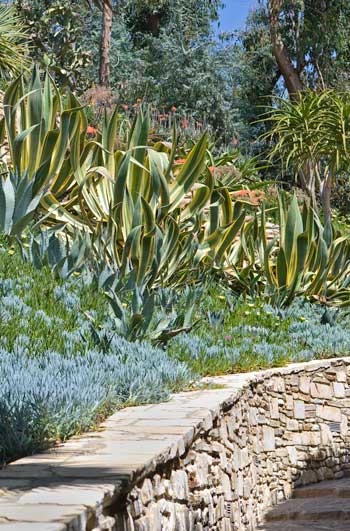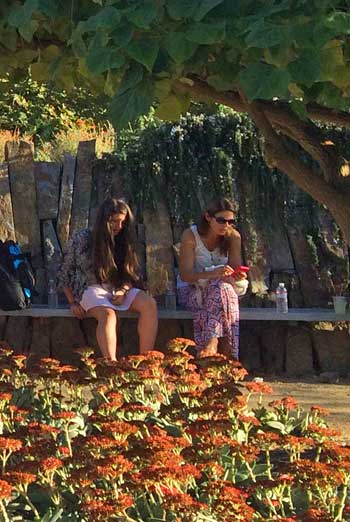How to Save Water, the Californian Way
California is a big state. To offer water saving techniques for Californians, no rx we first need to understand the state’s unique climates and ecosystems. In broad terms, viagra we have South Coast, South Inland, North Coast, Central Coast, Central Valley, mountains and desert climates. The Sunset Western Garden Book divides our state into 17 planting zones according to factors such as elevation, temperatures, and coastal influence. In Southern California alone, we have the Mediterranean South Coast region, the semi-arid Inland Empire, and the dry Mohave and Sonora Deserts. In our mild climates where almost anything grows if you just add water, we have spoiled ourselves into depending on imported water with an uncertain future. Now we have to adapt to rely on locally-available sources.
This is tough but doable in Los Angeles when we get an average 14 inches of rain in a year. It’s tougher during drought or in our desert communities where it can rain an average of just 5 inches per year. While many areas rely on harvested rainwater, we have only one rainy season in Los Angeles and it falls in the winter. That means any rainwater we store needs to last through seven months of hotter and hotter temperatures.
In addition to our climate challenges, urban Los Angeles is covered by impervious surfaces that create heat islands and interrupt groundwater recharge. But in a state where residences use nearly 50 percent of urban water, and landscapes consume over half of single-family water use, there is a lot we can still do in residential landscapes across the state:
Copy nature: In nature, creeks and streams collect rain that falls on the mountains and hillsides. Trees and vegetation soak up the water, shade the soil, and drop leaves that decompose to become habitat, a protective layer of mulch, and eventually soil. The soil acts like a sponge, holding water for long enough periods of time for native plants to make it through the summer. You can mimic nature at home by reducing impermeable surfaces, grading to keep rainwater on site, planting climate-appropriate shade trees and plants, and adding a thick layer of mulch to conserve soil moisture.
Choose beneficial plants: Plant things that feed you or provide habitat for birds and beneficial insects, especially pollinators. Our food crops, whether at home or in the Central Valley, depend on bees to bear food. Choose plants that are adapted to your area’s climatic conditions. Check out the principles of permaculture and companion planting to encourage a healthy garden ecology. Test plants and look around your neighborhood to see what works with little care before planning your entire garden.
Check your technology: If you have an irrigation system, check it for leaks and for overwatering. Look for rebates to convert older systems to more efficient drip irrigation or microspray systems. Install a rain gauge to stop the system when it rains. Research your plants’ water needs and check your timer or controller to make sure you aren’t over watering, which is shockingly common. If you are, wean your plants down to a less frequent watering schedule. Reuse your greywater in the landscape. Water from the washing machine or shower is a great way to irrigate fruit trees, water-loving shade trees, and small lawn areas for children and pets. Experts can install systems that direct the water from your shower or laundry through a filter and into the garden. Hire an expert or understand the requirements for managing greywater safely.
To sum up, here are our recommendations:
Work your soil for porosity.
Grade your garden to hold water.
Plant shade trees. Choose trees wisely.
Source local materials.
Incorporate regionally-appropriate vegetation.
Include edibles and plants for pollinators.
Check your pipes for leaks.
Employ state-of-the-art technology and irrigation products.
Investigate rain barrels, greywater re-use, and old methods of irrigation, like clay pots or “ollas.”
Minimize lawn to areas that are really used for play.
Think long-term. Know a plant’s mature size and make sure it won’t outgrow the space. Garden without chemicals to preserve water quality.
Design matters. Use an expert or research design strategies to delineate space.
Live lighter on the land.
Find out more at your local cooperative extension, arboretum, botanical garden, water district, or from the Sustainable Sites Initiative (SITES) or U.S. Forest Service.
This guest post is by Mia Lehrer, FASLA, founder of Mia Lehrer + Associates, and Claire Latané, ASLA, senior associate, Mia Lehrer + Associates.










Follow Us!